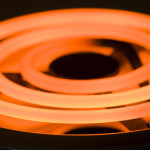baz
VIP MEMBER
- Joined
- May 26, 2010
- Messages
- 8,560
Do you mean fill the holes with aluminium discs?If you really want good heat transfer and low weight, you need to use aluminum
Do you mean fill the holes with aluminium discs?If you really want good heat transfer and low weight, you need to use aluminum

No. An aluminum barrelDo you mean fill the holes with aluminium discs?
As posted by Davamb in the thread Ken posted a link to:May as well cut off the fins entirely
The fins are there to promote heat transfer away from the barrels. How is heat supposed to transfer if there's no surface for the heat to transfer to?
acotrel said:How often have you seen guys walk up to a motorcycle which has a stone cold motor, kick it into life then rev it up straight away without even letting it idle for a few minutes
I believe what you are saying is that you are gaining vertical surface are with the holes. So the math is what you loose in horizontal area vs. what you gain in vertical area.As posted by Davamb in the thread Ken posted a link to:
For what it's worth - little bit of math:
surface area lost = 2 * pi * d^2, surface area gained = t * pi * d
where d is the diameter of the hole and t is the thickness of the fin.
For an improvement in passive convection cooling, the area gained shall be greater than the area lost:
t * pi * d > 2 * pi * d^2
or
t > 2d
or
d < t / 2
i.e. you will increase the overall surface area available for cooling as long as the diameter of the hole is less than half the thickness of the fin.
So one big hole beats many small onesDon’t forget the fins lose heat by radiation as well as conduction to air.
If radiating surfaces are very close together, such as the sides of a very small hole, then they radiate heat into each other, which can’t help.
That's somewhat simplistic because you need to take into account the airflow which is the medium the heat from the fins is transferring to. You start getting into triple integers doing that math.
That's kind of my point. And aluminum transfers heat significantly better than steel (but not as good as copper)Before the fins can release heat first it needs to get into them. I suspect that the drilling would reduce the ability of the fins to conduct heat away from the source, and reduce the quantity of heat which the fins could remove/hold, so that whether they then are better worse at releasing it would be irrelevent. Just my seat of the pants 5c worth.

